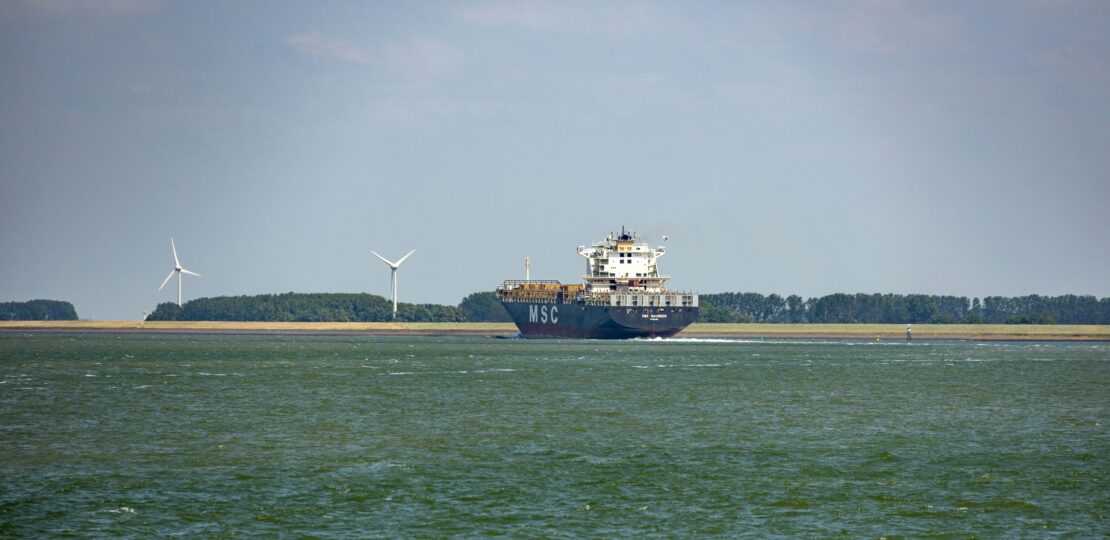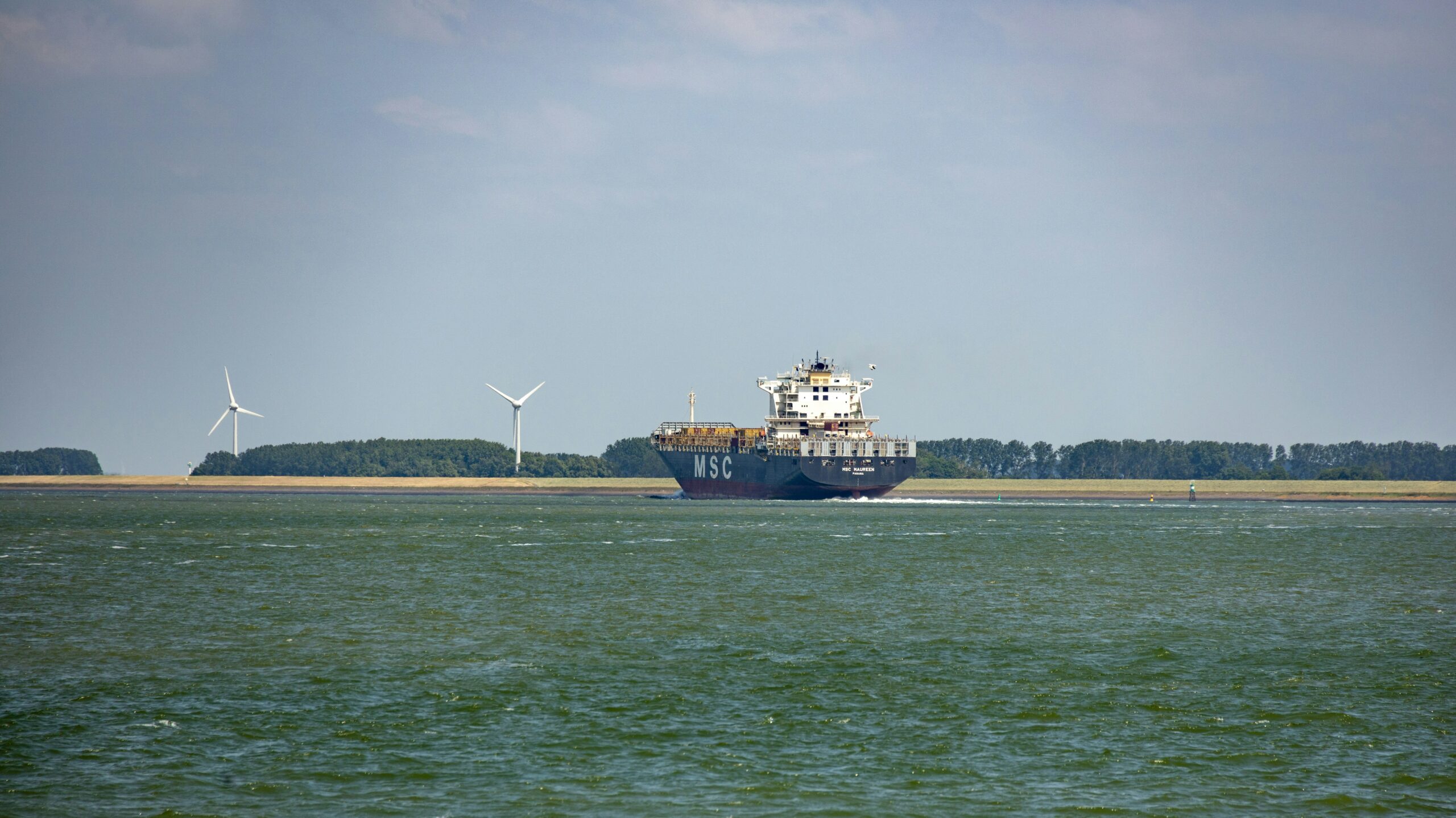Navigating the Future: Carbon-Neutral Shipping Strategies
September 30, 2025 | by qqvmedia.com


Understanding Carbon Neutrality in Shipping
Carbon neutrality in the shipping industry refers to achieving net-zero greenhouse gas emissions, which is a critical goal in mitigating the ongoing impacts of climate change. The shipping sector contributes approximately 2-3% of global greenhouse gas emissions, primarily through the combustion of fossil fuels in vessels. This significant carbon footprint necessitates urgent action to develop and implement sustainable practices that can significantly reduce these emissions.
The concept of net-zero emissions involves balancing the amount of greenhouse gases emitted with an equivalent amount removed from the atmosphere. This balance can be achieved through various strategies, including adopting cleaner technologies, using alternative fuels, and implementing energy-efficient practices onboard ships. Additionally, carbon offsetting plays a vital role in achieving carbon neutrality. This process involves investing in projects aimed at reducing emissions elsewhere, such as reforestation or renewable energy initiatives, effectively counterbalancing the emissions produced by shipping operations.
Understanding these terms is essential as the shipping industry strives toward the goal of carbon neutrality. The implementation of sustainable practices is not only beneficial for the environment but also necessary for compliance with increasing regulatory pressures and consumer demand for greener logistics solutions. Moreover, adopting carbon-neutral strategies can enhance operational efficiency and potentially reduce costs in the long run.
In light of the shipping industry’s impact on climate change, it is imperative for stakeholders, including shipowners, operators, and policymakers, to prioritize sustainable initiatives. This collective effort will not only contribute to global environmental goals but also secure the long-term viability of the shipping sector in an increasingly eco-conscious world.
Innovative Technologies for Green Shipping
The shipping industry, a significant contributor to global greenhouse gas emissions, is witnessing a transformative shift towards carbon-neutral operations. This evolution is being driven by innovative technologies that promise to revolutionize maritime logistics and reduce environmental impact. One of the most promising advancements is the development of alternative fuels, including hydrogen and biofuels. Hydrogen, in particular, has garnered attention due to its potential to be produced from renewable sources, thus providing a cleaner energy option for vessels. Biofuels, derived from organic materials, are being utilized to replace traditional marine fuels in existing engines, significantly lowering carbon footprints.
Furthermore, the emergence of electric and hybrid vessels has gained momentum. These ships utilize battery power to minimize reliance on fossil fuels, delivering substantial reductions in emissions, particularly for short voyages. Some companies are also experimenting with hybrid systems that combine conventional engines with electric propulsion, thus maximizing efficiency while maintaining operational reliability.
Wind-assisted propulsion is another burgeoning technology reshaping the shipping landscape. By incorporating sails or large kites, vessels can harness wind energy to complement their primary power sources. This not only enhances fuel efficiency but also contributes to lowering operational costs over time. Notable examples include the recent deployment of large sailing cargo ships that demonstrate the applicability of ancient navigation methods combined with modern technology.
In terms of design, energy-efficient ships are being engineered with hydrodynamic shapes, lightweight materials, and advanced hull coatings that reduce drag and improve fuel consumption. Real-world implementations of these technologies highlight their effectiveness, with several shipping companies reporting notable emissions reductions and enhanced performance metrics. The collective impact of such innovations signifies a promising stride towards a greener, more sustainable shipping industry that aligns with global carbon reduction goals.
Regulatory Frameworks and Industry Initiatives
The transition towards carbon-neutral shipping is significantly influenced by various regulatory frameworks and industry initiatives. At the international level, the International Maritime Organization (IMO) plays a pivotal role in setting ambitious targets to reduce greenhouse gas emissions from maritime transport. The IMO’s initial strategy aims for a reduction of total annual greenhouse gas emissions by at least 50% by 2050 compared to 2008 levels. This framework serves as a foundation for member states to develop national regulations that promote sustainable maritime practices.
Simultaneously, the European Union’s Green Deal efforts emphasize sustainability in shipping by introducing stricter regulations and long-term goals. The European Union aims to achieve carbon neutrality by 2050, incorporating shipping into its regulatory framework. This includes modifying the EU emissions trading system to cover maritime transport and encouraging investments in greener technologies. These national and international regulations highlight the urgency of transitioning to carbon-neutral shipping and the harmonization of efforts needed across borders.
In addition to formal regulations, industry collaborations have emerged to enhance sustainability efforts. The Getting to Zero Coalition is a prime example, uniting a diverse group of stakeholders, including cargo owners, shipping companies, and energy providers, to accelerate the decarbonization of the shipping industry by 2030. These collaborations facilitate knowledge sharing, technological advancements, and the development of innovative solutions, thus influencing policy-making and driving the adoption of sustainable practices.
Through these regulatory frameworks and industry initiatives, the path to carbon-neutral shipping becomes clearer. They not only establish guidelines but also foster collaboration among various stakeholders, emphasizing the urgent need for collective action in addressing climate change within the shipping sector. As the industry evolves, the success of these initiatives will rely on their ability to adapt and thrive in an increasingly dynamic regulatory landscape.
Challenges and Future Directions for Carbon-Neutral Shipping
The pursuit of carbon neutrality in the shipping sector is fraught with challenges that stem from a variety of economic, technological, and infrastructural barriers. One of the primary hurdles is the significant capital investment necessary to upgrade existing fleets and infrastructure to support low or zero-emission technologies. Many shipping companies operate on thin profit margins, making it difficult to justify the expense of transitioning to more sustainable practices.
Technologically, while alternatives such as hydrogen fuel cells, biofuels, and electric propulsion are promising, they remain at varying stages of development. The efficiency and scalability required for these technologies to be integrated into the commercial shipping fleet must be demonstrated before widespread adoption can occur. Moreover, the current regulatory environment often lacks harmonization across different jurisdictions, complicating compliance for global shipping operations.
Infrastructurally, ports and supply chains must adapt to accommodate new fuels and technologies. Investments in charging stations or bunkering infrastructure for alternative fuels will be essential, but port authorities and stakeholders may face challenges in coordinating these developments. Furthermore, the cooperation of multiple stakeholders within the supply chain is crucial. Without a collective effort among shipowners, cargo owners, and service providers, the path to carbon neutrality will remain fragmented.
The role of public support and regulatory frameworks also cannot be understated. Policies incentivizing greener practices and investments in research and development are vital to drive innovation in carbon-neutral shipping strategies. Looking forward, trends such as increased collaboration between industry players, enhanced regulatory frameworks, and a push for transparency in sustainability efforts will likely influence the future landscape of shipping. By fostering a unified effort, the maritime industry can systematically address these challenges and work towards a more sustainable future.